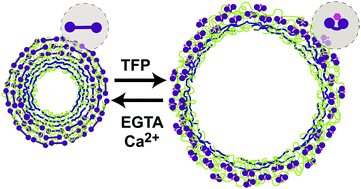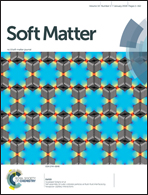Bioinspired dynamic microcapsules
Abstract
There is an increasing interest in bioinspired dynamic materials. Abundant illustrations of protein domains exist in nature, with remarkable ligand binding characteristics and structures that undergo conformational changes. For example, calmodulin (CaM) can have three conformational states, which are the unstructured Apo-state, Ca2+-bound ligand-exposed binding state, and compact ligand-bound state. CaM's mechanical response to biological cues is highly suitable for engineering dynamic materials. The distance between CaM globular terminals in the Ca2+-bound state is 5 nm and in the ligand-bound state is 1.5 nm. CaM's nanoscale conformational changes have been used to develop dynamic hydrogel microspheres that undergo reversible volume changes. The current work presents the fabrication and preliminary results of layer-by-layer (LbL) self-assembled Dynamic MicroCapsules (DynaMicCaps) whose multilayered shell walls are composed of polyelectrolytes and CaM. Quasi-dynamic perfusion results show that the DynaMicCaps undergo drastic volume changes, with up to ∼1500% increase, when exposed to a biochemical ligand trifluoperazine (TFP) at pH 6.3. Under similar test conditions, microcapsules without CaM also underwent volume changes, with only up to ∼290% increase, indicating that CaM's bio-responsiveness was retained within the shell walls of the DynaMicCaps. Furthermore, DynaMicCaps exposed to 0.1 M NaOH underwent volume changes, with only up to ∼580% volume increase. Therefore, DynaMicCaps represent a new class of polyelectrolyte multilayer (PEM) capsules that can potentially be used to release their payload at near physiological pH. With over 200 proteins that undergo marked, well-characterized conformational changes in response to specific biochemical triggers, several other versions of DynaMicCaps can potentially be developed.



 Please wait while we load your content...
Please wait while we load your content...